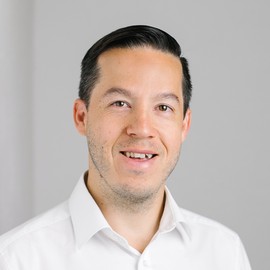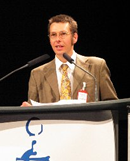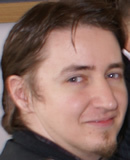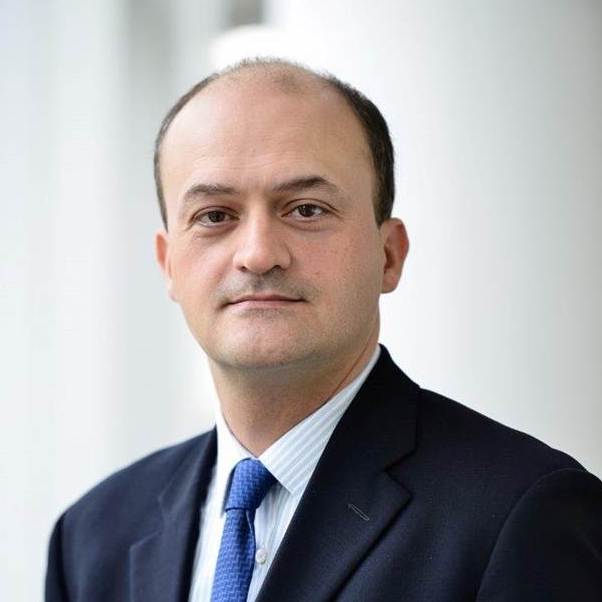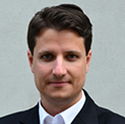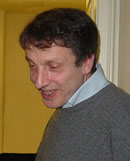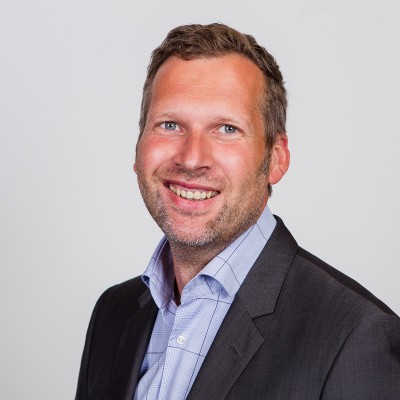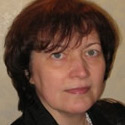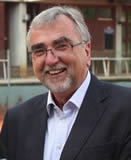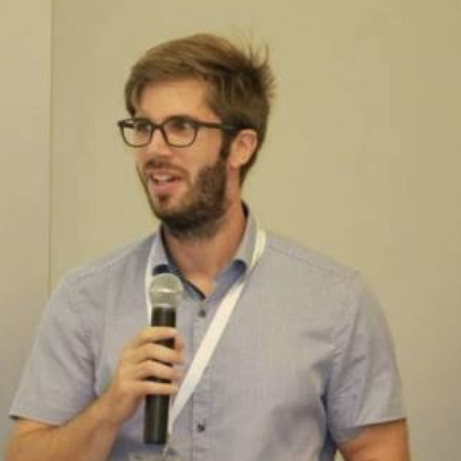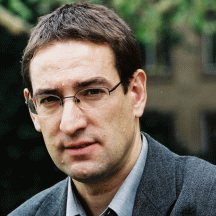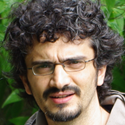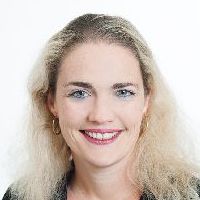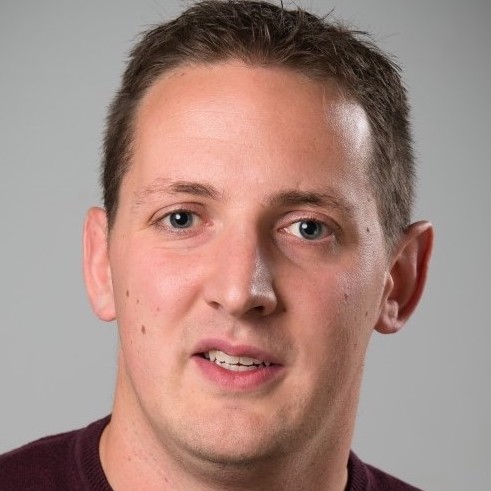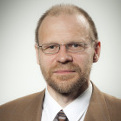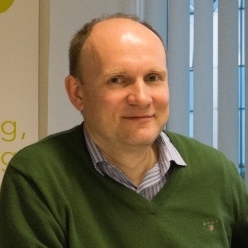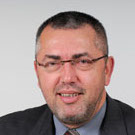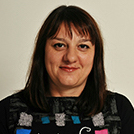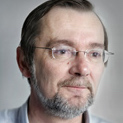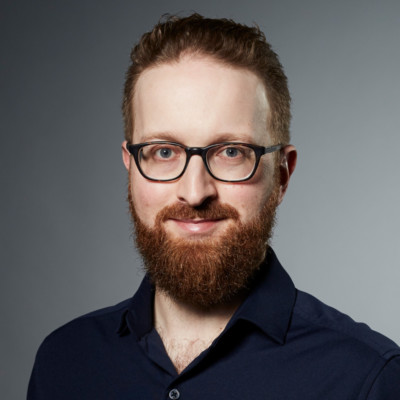Abstracts
Have a look at the lecture abstracts of this year's edition and explore the profiles of the presenters!
All times are UTC+2 (Vienna, CEST - Central European Summertime).
The lecture introduces a new type of enterprise models called Fractal Enterprise Models (FEM), with accompanying methodological support for their design. FEM shows interconnections between the business processes in an enterprise by connecting them to the assets they use and manage. Assets considered in the model could be tangible (buildings, heavy machinery, etc.) and intangible (employees, business process definitions, etc.). A FEM model is built by using two types of patterns called archetypes: a process-assets archetype that connects a process with assets used in it, and an asset-processes archetype that connects an asset with processes aimed to manage this asset (e.g., hiring people, or servicing machinery). Alternating these patterns creates a fractal structure that makes relationships between various parts of the enterprise explicit. There are several areas where FEM can be used in practice , e.g. for planning and completing organizational change, including a radical one, such as business model transformation. The lecture will present practical examples of FEM usage.
Lecture at NEMO2019
Date/Time: Thursday, July 25, 2019 at 15:00 UTC+2/CEST
The benefits of domain-specific modelling methods – as a complement to general purpose and de-factor standard modelling methods like UML BPMN are doubtless. The process from an idea over the design up to the deployment of new modelling methods is referred to as the modelling method conceptualization. This presentation will provide a condensed walkthrough of all conceptualization phases by highlighting some of the most pressing challenges and discussing recent research results for overcoming these challenges. The second part of this talk will report on different modelling method conceptualization scenarios: the standard realization scenario, the standard extension scenario, and the domain-specific grass-roots scenario. The aim of this part of the talk is to show possibilities of modelling method conceptualization in academia and industry.
Lecture at NEMO2019
Date/Time: Monday, July 22, 2019 at 16:30 UTC+2/CEST
The current industrial transition towards Factories of the Future (FoF) implies strong transformation of enterprise Business Models within the manufacturing sector. Product Service Systems are a key component of this transition, and contribute to renovate both the underlying enterprise models and the needs of enterprise engineering tools. The objective of the lecture is to articulate the overall needs of transition towards FoF with the requirements for innovative conceptual modelling approaches and new enterprise engineering methods and tools. The lecture will first give a synthetic insight on PSS within the context of FoF, to make possible for the audience to understand the key concepts of PSS and key industrial needs for developing innovative enterprise modelling and engineering solutions. The second part of the lecture articulate two dimensions of Enterprise engineering: an advanced modelling method dedicated to support PSS design and engineering (based on a PSS-oriented meta-model) and a decision-making approach for PSS economic-model balancing.
Lecture at NEMO2019
Date/Time: Tuesday, July 23, 2019 at 10:00 UTC+2/CEST
The interplay between Knowledge Graphs and Domain-specific Modelling Languages was traditionally concerned with the challenge of “ontological commitment” - i.e., checking the ontological qualities of a language in order to enforce coherence and consistency in model contents. An alternative approach to coupling the two knowledge representation approaches will be promoted by this lecture, motivated by pragmatic requirements of externalizing and combining both human-readable and machine-readable representations, thus giving a novel interpretation to the seminal SECI knowledge conversion cycle. Agile modelling languages are treated here as schemas for knowledge that is amenable to linking, reasoning and publishing with the help of semantic technology - i.e., RDF graph databases, OWL axioms, SPARQL queries and endpoints. The presentation highlights benefits of combining the Agile Modelling Method Engineering Framework with the Resource Description Framework in order to build novel knowledge acquisition methods. The lecture will present results derived from applying and refining this idea in the ComVantage FP7 EU project and the EnterKnow PED Romanian research project, taking it to the point where it may inspire a novel “model-aware” software engineering method.
Lecture at NEMO2019
Date/Time: Tuesday, July 23, 2019 at 09:00 UTC+2/CEST
The low cost of IoT devices such as sensors and micro-controllers has enabled Industry 4.0. This mainstream contains not only industrial applications but also other ones perceived as revolutions, which has been summarized as smart-everything, internet-of-everything and, of course, the smart city revolution. Cyber-physical systems (CPS) are the integration of distributed hardware controlled by distributed software with the aim of controlling physical processes. Therefore they should have both software-hardware devices for perceiving real world variables and software-hardware devices for acting in the real world. In this NEMO-2019’ lecture, the current state of modelling techniques for CPS and how agent-oriented modelling languages provide most of the required features for CPS modelling will be presented. In the practice part of the lecture, a set of different agent-oriented patterns are shown and the professor will guide the design of your own CPS by using these patterns.
Lecture at NEMO2019
Date/Time: Thursday, July 25, 2019 at 10:00 UTC+2/CEST
The design and development of a Product–Service System (PSS) raises new issues since the service component introduces further requirements than traditional product engineering. Compared to physical products, services are generally under-designed and inefficiently developed. Approaches such as New Service Development, Service Design and Service Engineering have emerged during the years to support the design and development of service either as a system itself or as a constituting element of a PSS. In particular, Service Engineering investigates service design and development with a systematic perspective and with a seamless integration of product and service contents. Purpose of the lecture is to provide a holistic conceptualization and an up-to-date analysis of the current state of the art on Service Engineering models with a specific focus on their adoption in the PSS context. A critical analysis is also performed with the aim to define a research agenda and the most prominent key actions that could give directions for future research.
Lecture at NEMO2019
Date/Time: Wednesday, July 17, 2019 at 11:30 UTC+2/CEST
We propose a model-based method for information alignment using educational standards as a case study. Discrepancies and inconsistencies in educational standards across different states/cities hinder the retrieval and sharing of educational resources. Unlike existing educational standards alignment systems that only give binary judgments (either “aligned” or “not-aligned”), our proposed system classifies each pair of educational standard statements in one of seven levels of alignments: Strongly Fully-aligned, Weakly Fully-aligned, Partially-aligned, Partially-aligned, Partially-aligned, Poorlyaligned, and Not-aligned. Such a 7-level categorization extends the notion of binary alignment and provides a finer grained system for comparing educational standards that can broaden categories of resource discovery and retrieval. This study continues our previous use of mathematics education as a domain, because of its generally unambiguous concepts. We adopt a materialization pattern (MP) model developed in our earlier work to represent each standard statement as a verb-phrase graph and a nounphrase graph; we align a pair of statements using graph matching based on Bloom’s Taxonomy, WordNet, and taxonomy of mathematics concepts. Our experiments on data sets of mathematics educational standards show that our proposed system can provide alignment results with a high degree of agreement with domain expert’s judgments.
Lecture at NEMO2019
Date/Time: Tuesday, July 16, 2019 at 10:00 UTC+2/CEST
In the Internet of Things (IoT) era, the computing devices, the machines and even the objects are given the ability of exchanging data by containing or carrying sensors, actuators and network interfaces. Since, this capability is often present without supervision, it is very likely that increased security risks per device or object will appear. Therefore, a security assessment that aims at mitigating the risks is of high importance and ideally starts at the designing phase to minimize the impact of vulnerabilities. In the designing phase, this assessment can be applied on the corresponding implementation model. In this lecture, first a short introduction to the ADOxx meta-modeling SAPnet platform will be given. SAPnet includes the ontology toolkit for the Stochastic Petri net (SPN) modeling of the actors’ states and transitions. Additionaly, it is enriched with tools for an assessment procedure used to estimate the security level of a model based on the actor’s (i.e. devices, machines, objects) characteristics. Then, the lecture will walk through the assessment procedure and demonstrate how this procedure is assisted by the platform. Finally, an example implementation of an Intelligent Transportation System (ITS) life-cycle on SAPnet will be presented.
Lecture at NEMO2019
Date/Time: Tuesday, July 16, 2019 at 11:30 UTC+2/CEST
Distributed ledger technologies have recently gained attention due to their successful application to blockchain and smart contract platforms such as Bitcoin and Ethereum. In this talk we will explore how these technologies can contribute to the domain of enterprise modeling by presenting the concept of Knowledge Blockchains. With this concept, enterprise models can be linked with blockchains for the immutable, decentralized and transparent storage of knowledge assets, the traceability of the origin of knowledge, and the application of so-called zero-knowledge proofs. The talk will provide a brief introduction into the underlying technologies and present extensions for the ADOxx metamodeling platform as a first proof-of-concept. Finally, potential use cases for the approach will be highlighted and an outlook will be given towards future research directions.
Lecture at NEMO2019
Date/Time: Monday, July 22, 2019 at 15:00 UTC+2/CEST
While it is undisputed that today’s enterprises depend crucially on IT, many companies still struggle with exploiting the potential of IT to a full extent. On the one hand, that requires adapting IT infrastructures of ever increasing complexity to changing needs of the business, on the other hand, it recommends rethinking organizational structures and business processes to create new opportunities for the efficient use of IT. In the long run, the digital transformation may even require to reinvent the entire business model, which will usually imply a major restructuring of a company and its IT. IT-Business alignment can be mastered only, if a professional perspective on the business is combined with elaborate knowledge of the IT. The field of enterprise modelling is addressing this demand by integrating models of the business, such as goal models or business process models, with models of the IT, such as models of the IT infrastructure, object models etc. In his talk, Ulrich Frank, will give an overview of “Multi-Perspective Enterprise Modelling” (MEMO) to demonstrate how enterprise models support various kinds of business and IT related analyses that support both, IT managers and line managers and that thereby serve as a pivotal instrument to foster IT business alignment. For this purpose, he will give an overview of the domain-specific modelling languages that are part of MEMO, the language architecture and the language specification. The presentation will be supplemented by a tutorial on the use of MEMO4ADO, a tool that facilitates the construction of integrated enterprise models using the MEMO languages.
Lecture at NEMO2019
Date/Time: Monday, July 22, 2019 at 09:00 UTC+2/CEST
An eco-system comprises a network enterprises and their customers, offering each other valuable services and/or products. How do we develop such eco-systems in a model-based way. We discuss an approach, called e3value that designs and describe eco-systems with models of increasing complexity. The method will be explained by means of a series of case studies.
Lecture at NEMO2019
Date/Time: Tuesday, July 23, 2019 at 16:30 UTC+2/CEST
Business Process Modelling (BPM) and Business Intelligence (BI) are two important areas in business informatics, which are treated, often rather separated from each other. Looking at the literature and the activities in the two areas shows that process modelling takes a look at the business from a more production and organizational oriented view, whereas business intelligence activities emphasize more the role of the customer in the business process. In this lecture we want to take a unified view onto these two approaches and show how BPM and BI support each other. For demonstration we use the activities of data understanding and data provisioning which are at the beginning of any BI activity. Due to the abundance of data on the Internet integration of traditional data sources and big data is a challenging task. We present a process model for data integration and show how this model can be realized using the ADOxx platform. The basic idea of the model is simultaneous processing of the data workflow and the associated workflow of the metadata which describe the data processing activities. Such a model supports better understanding of the data and extends traditional methods for accessing data quality.
Lecture at NEMO2019
Date/Time: Thursday, July 25, 2019 at 09:00 UTC+2/CEST
We define Japanese creative services and discuss how they have been sustained successfully and its application to global service enhancement. There are many “Shinise” (shops of long standing) service companies in Japan that are quite unique compared to the companies located in any other geographical region. They typically have anecdotal values based on nature and seasons, various types of culture, histories, and/or lifestyles. Several Japanese creative services are expanding their activities toward global markets. We explain the mechanisms of the sustainability and scalability of advanced cases of Japanese Creative Services. A key aspect of the mechanism is a communication between service providers and consumers based on sharing/interpreting/utilizing of tacit context in a community. For analyzing the key aspect, we propose the combined approach of sociology/anthropology, psychology, engineering and design thinking. We developed a meta-modeling platform for handling the combined analysis of the Japanese Creative Services. We believe that this kind of approach will contribute to creating new values within the field of service science and for value-added global services.
Lecture at NEMO2019
Date/Time: Thursday, July 18, 2019 at 11:30 UTC+2/CEST

University of Applied Sciences and Arts Northwestern Switzerland FHNW, Switzerland
The continuous alignment of business and IT in a rapidly changing environment is a grand challenge for today’s enterprises. Decision makers use models to understand and analyze a situation, to compare alternatives and to find solutions. Additionally, there are systems that support decision makers through data analysis, calculation or simulation. While humans prefer graphical or textual models, machine-interpretable models have to be represented in a formal language. This lecture describes a meta-modelling approach, which combines human-interpretable graphical enterprise architecture models with machine-interpretable enterprise ontologies. A metamodel which is represented as a formal ontology determines the semantics of the modeling language. To create a graphical modelling language, a graphical notation can be added for each class of the ontology. Every time a new modelling element is created during modelling, an instance for the corresponding class is created in the ontology. Thus, models for humans and machines are based on the same internal representation. The approach has been applied in the CloudSocket project for selection of cloud services in order to achieve Business Process as a Service.
Lecture at NEMO2019
Date/Time: Thursday, July 18, 2019 at 15:00 UTC+2/CEST
Business Process Improvement (BPI) ranks among the topics of highest priority in modern organizations. However, considering the rapidly changing customer requirements in times of high market transparency and the increasing collaboration between organizations, the conduction of BPI projects has become very challenging. Implicit process knowledge from diverse process participants needs to be elicited and transformed into improvement opportunities. In this context, the results achieved need to be properly documented, communicated and processed throughout a company. The purpose of the lecture is to present a conceptual solution (called “BPI roadmap”), which is a means for systematically performing BPI initiatives based on a set of easy-to-use and proven BPI techniques. In the in the tool “RUPERT” (Regensburg University Process Excellence and Reengineering Toolkit), the BPI techniques are realized in form of corresponding model types. The lecture gives insights into the development of the “BPI roadmap” and “RUPERT” and demonstrates the tool’s functionality by referring to a use case stemming from a cooperation project.
Lecture at NEMO2019
Date/Time: Wednesday, July 24, 2019 at 10:00 UTC+2/CEST
As the paradigm of enterprise modelling originally envisioned, a hybridization of modelling approaches is needed in order to cover the multiple facets of a business view, its context and requirements for different types of resources - including IT services and infrastructure. The “modelling method framework” [Karagiannis/Kühn, 2002] establishes key building blocks - i.e. the modelling language, the modelling procedure and mechanisms/ algorithms - to enable the required hybrid modelling and to increase the value of models beyond their traditional functions. As the importance of Next Generation Enterprise Modelling in the age of the Internet of Things, Industry 4.0, Industrial 3-D printing etc. increases, new modelling capabilities, semantically enriched design concepts and adapted operational functionality must satisfy evolving needs, in order to successfully manage not only the transformation in the digital enterprise stage, but also the adaptation and extension of existing services. In this context, the foundations of a „conceptual-model“-awareness approach for next generation enterprise information systems will be presented. This novel approach makes use of semantic networks to extend model-awareness towards arbitrary types of models that are developed for specialized communities aiming for domain-specificity (or even case-specificity) in their modelling language, therefore favoring productivity at the expense of reusability across domains. The technological space for capturing and bridging knowledge through model semantics is primarily based on diagrammatic models. Two categories of models are employed in this context: (1) Models of Concepts for describing a common understanding of a domain through its concepts and relations; (2) Models that use Concepts are typically domain-specific models based on some already established understanding of the domain. The hereby introduced life cycle of Agile Modeling Method Engineering - AMME [PCI2015] aims to apply the principle of agility established in Software Engineering (e.g., evolutionary development, flexible response to change) to the practice of Modelling Method Engineering. The main assumption is that a modelling method may evolve iteratively based on changing modelling requirements and feedback loops. Within the context of AMME, a full methodological approach is established by the OMiLAB (http://www.omilab.org), with a life cycle encompassing five phases: (1) create, (2) design, (3) formalize, (4), develop and (5) deploy/validate. The approach is supported, in its fast prototyping stage, by the metamodeling domain-specific language MM-DSL and the meta-modelling platform ADOxx (http://www.adoxx.org).
Lecture at NEMO2019
Date/Time: Monday, July 15, 2019 at 11:30 UTC+2/CEST
The NEMO 2019 lecture concerns an approach to the application of conceptual modelling known as the Capability Oriented Requirements Engineering (CORE) approach. The conceptual modelling framework applied in CORE employs a set of complimentary and intertwined modelling paradigms based on enterprise capabilities, goals, actors, and information objects. The lecture will define the foundational concepts of CORE as well as the way of working from capturing textual descriptions from stakeholders, progressing to formally defining models of early requirements, based on the CORE meta-model, and in a stepwise refinement define functional and non-functional requirements of desired systems. The theory will be supplemented by examples from a real application of CORE on a Cyber Physical Production System.
Lecture at NEMO2019
Date/Time: Wednesday, July 24, 2019 at 14:00 UTC+2/CEST
In the era of global economy and frequent changes, the information systems development also faces the need for continuous realignment with the business processes and systems. Continuous development, continuous delivery, and continuous engineering have become common notions in contemporary systems development language. In this context, right requirements still are the key of project success; however the methods for their engineering must adhere to challenges and possibilities of enterprise digitalization levels. One of the opportunities that are provided by enterprise modeling tools is the possibility to utilize enterprise models in requirements engineering. FREEDOM framework is one of the means for structured and purposeful usage of As-Is and To-Be enterprise models for requirements engineering in different project types and enterprises.
Lecture at NEMO2019
Date/Time: Tuesday, July 23, 2019 at 14:00 UTC+2/CEST
In general, process algebra can be the most suitable formal method to specify IoT systems due to the equivalent notion of processes as things. However there are some limitations to predict smart IoT systems with the properties of distribution, mobility and real-time. For example, Timed pi-Calculus has capability of specifying time property, but is lack of direct specifying both execution time of action and mobility of process at the same time. And d-Calculus has capability of specifying mobility of process itself, but is lack of specifying various time properties of both action and process, such as, ready time, timeout, execution time, deadline, as well as priority and repetition. In order to overcome the limitations, this lecture presents a process algebra, called, dTp-Calculus, extended from d-Calculus, by providing with capability of specifying probabilistic transitions with the set of time properties, as well as priority and repetition. Further the method is implemented as a tool, called SAVE, on the ADOxx meta-modeling platform. It can be considered one of the most practical and innovative approaches to model probabilistic behavior of smart IoT systems.
Lecture at NEMO2019
Date/Time: Wednesday, July 24, 2019 at 09:00 UTC+2/CEST
Research has often been regarded as a “wicked problem”, an activity of informed curiosity when researchers state what they are doing when they don’t really know what they are doing. It is a process which is guided by a particular methodology the choice of which is based on the contextual setting of the research topic (the challenges) as well as the motivation for a solution (the deliverables). In this lecture, we will examine issues involved in research with particular emphasis on research in the field of Enterprise Information Systems (EIS). We will examine the issues underpinning the EIS domain, the emergence of research needs from digitisation, to interpretation and more recently to transformation of enterprises. Given this context, we will explore different research methodologies that may be deployed, such as those of Design Science Research, Action Research, Case Study, Survey Design, Mixed Methods and Qualitative Methods, each one of which is suited to different motivational characteristics of the underlying research goals. We will also explore the social dimension of research, including issues encountered by researchers in settings involving communities within their specific research environment as well as other related communities (e.g. the NEMO Summer School) and the broader EIS community. Branching out from a close research environment by exploiting gained experiences, towards collaborative initiatives, competing for research funding and helping the next generation of researchers will also be addressed in this lecture.
Lecture at NEMO2019
Date/Time: Thursday, July 25, 2019 at 16:30 UTC+2/CEST
For decades, in many, particularly complex organization systems, there is an open issue how to support information management process so as to produce useful knowledge and tangible business values from data being collected. One of the central roles in addressing this issue still play databases and information systems. In recent years, we are the witnesses of great movements in the area of business information management. Such movements are both of technological and methodological nature. By this, today we have a huge selection of various technologies, tools, and methods in data engineering as a discipline that helps in a support of the whole data life cycle in organization systems, as well as in information system design that supports the software process in data engineering. Despite that, one of the hot issues in practice is still how to effectively transform large amounts of daily collected operational data into the useful knowledge from the perspective of declared company goals, and how to set up the information design process aimed at production of effective software services in companies. This lecture is intended to address interdisciplinary character of a set of theories, methodologies, processes, architectures, and technologies in disciplines such as Data Engineering, Information System Design, Big Data, NoSQL Systems, and Model Driven Approaches in a development of effective software services. In September 2019, a workshop with the same title and acronym MADESID is organized in the scope of the ADBIS 2019 conference. The lecture will give a short overview of the main workshop contributions.
Lecture at NEMO2019
Date/Time: Tuesday, July 16, 2019 at 09:00 UTC+2/CEST
Models are the basic human tools for managing complexity and understanding. As such, they play a key role in all scientific and engineering disciplines as well as in everyday life. Many modeling paradigms have evolved over time in different disciplines, resulting in a wide variety of modeling languages, methods and tools that have come and gone. This is particularly true for informatics, which is a modeling discipline in itself: for long it has systematized the field of modeling, for example by introducing model hierarchies, by ontological foundations, by developing universal modeling languages such as UML, or by specifying domain-specific modeling methods (DSMMs) for areas of application where universal approaches fail. In the context of digital transformation, modeling plays a central role in ensuring the functionality, security and quality of complex digital ecosystems. We approach this in the lecture from a rigorously model-centered perspective, which sees a digital ecosystem as a construct of networked model handlers in the sense of model producers and model consumers, whereby these handlers in turn are instances of models. We will illustrate the paradigm of model-centric architecture with the results of projects we have carried out in the areas of assistive systems, mechatronic systems and Quality Aware Software Engineering.
Lecture at NEMO2019
Date/Time: Monday, July 15, 2019 at 10:00 UTC+2/CEST
Business processes in the age of the internet are typically not restricted to single organizations but cross organizational borders to customers, suppliers and other organizations. The design of business processes for these business communities is a complex collaborative task, which requires special methodological support. This course introduces Horus, which includes a set of modeling methods and languages to support the whole life cycle of business processes within business communities. Horus is based on high-level Petri Nets for procedure modeling and provides additional modeling support for objects, resources, organizational structures, business goals and business rules. Simulation based concepts are provided to evaluate models. Besides describing the basic concepts of Horus, the course also gives an overview about ongoing research work.
Lecture at NEMO2019
Date/Time: Wednesday, July 24, 2019 at 15:00 UTC+2/CEST
Companies must exploit the potential of new technologies, in order to offer their customers innovative solutions with clearly defined benefits. This implies the transformation towards „intelligent companies“. Thus, IT plays an important role, as the implementation of an innovative and agile system setup is a fundamental success factor. In this lecture, Dr. Martin Petry will present how Hilti lays the foundation for high agility with the concept „Solid Core – Flexible Boundary“ and what significance the newly implemented Core-System S/4 HANA has for a successful change.
Lecture at NEMO2019
Date/Time: Tuesday, July 16, 2019 at 16:30 UTC+2/CEST
The modelling of knowledge, action and time is a topic of current research within the broader domain of knowledge representation and reasoning. The course will focus on declarative approaches for modelling and reasoning with change, paying particular attention to the integration of knowledge and action. As time is inherent in any type of activity and process, the course will also deal with the representation of temporal properties that characterize the occurrence of actions and the knowledge they generate. Practical aspects of reasoning about knowledge, action and time will be discussed in the context of solving constraint satisfaction problems for business process optimization. The ECAVI Event Calculus modelling tool, developed on top of the ADOxx metamodelling platform, will also be presented. ECAVI assists knowledge engineers in the process of axiomatizing causal domains.
Lecture at NEMO2019
Date/Time: Wednesday, July 17, 2019 at 09:00 UTC+2/CEST
Business Process modelling has acquired increasing relevance in software development. Available notations, such as BPMN, permit to describe the flow of activities of complex organisations, when they are pursuing specific objectives. On the one hand, this shortens the communication gap between domain experts and IT specialists. On the other hand, this permits to clarify the characteristics of software systems introduced to provide automatic support for such activities. Nonetheless the lack of a formal semantics hinders the adoption of the standard by software engineers, as it leaves room for ambiguity and it limits the possibility to precisely check the satisfaction of relevant behavioural properties. In both cases with a negative impact on the quality of the resulting software. The lecture will introduce a verification framework for BPMN, called BProVe, that is based on a structured operational semantics definition, implemented using the executable formal framework MAUDE. The specification has been devised to clarify the semantics of the language, and to make the model verification possible and effective. With the intention to effectively support BPMN model verification, also on those scenario suffering from the state-space explosion problem, BProVe integrates both standard model checking techniques, through the MAUDE’s LTL model checker, and statistical model checking techniques, through the statistical analyzer MultiVeSta. To support the adoption of the framework a complete toolchain that allows for rigorous modelling and verification of business processes has been developed. In the lecture practical examples will be used, and successively a set of exercises will be proposed to students that will have the opportunity to use the proposed tool chain.
Lecture at NEMO2019
Date/Time: Wednesday, July 24, 2019 at 16:30 UTC+2/CEST
Enterprise models are ussed to represent different aspects of /related-to an organisation / enterprise. Such enterprise models typically take the form of conceptual models expressed in terms of a more specialised, purpose specific, modelling language. In general, such modelling languages, force modellers to “reduce” the models to mere boxes-and-lines diagrams, where it is left to the names in / on the boxes to provide a linkage to semantically richness, and nuances, of the domain being modelled. In this lecture, we discuss the strategy to ground enterprise models in purpose / domain specific languages on top of a conceptual model expressed in a more generic domain modelling language, where the latter allows modellers to include richer verbalisations of the concepts and their relationships. This will be illustrated in terms of example models in the ArchiMate language, while grounding these on models expressed in the well known fact-based modelling language ORM.
Lecture at NEMO2019
Date/Time: Thursday, July 25, 2019 at 14:00 UTC+2/CEST
Digital transformation is not just the adoption of new information technologies and computerization of human activities. It embraces much broader strategic ambitions and involves fundamental changes in the structure, activities and even culture of the organization, with the primary goal of innovating and creating value. The approach for guiding digital transformation is necessarily exploratory, agile, and participatory, involving all stockholders as responsible co-creators. It has to deal with the challenges raised by the gap between the living world (the organization and its activities) and the artificial world (information technologies). It should provide a support for assessing the impact and the risk of the change in the organization implied by the digitalization and evolution of its information systems. Last but not least, we expect this approach to be situation-driven, easily adaptable to different organizational settings. In this course we will analyze the challenges of digital transformation, define the requirements for methods supporting it, and discuss contributions in the field.
Lecture at NEMO2019
Date/Time: Thursday, July 18, 2019 at 09:00 UTC+2/CEST
Comliance management is a pressing challenge for almost any enterprise. With the constant advent of new regulations such as the GDPR, enterprises are continuously forced to derive, implement, monitor, check, and adapt compliance constraints on top of their business processes. This lecture will explain concepts along the compliance life cycle, including design time compliance and compliance monitoring. Also the the role of imperative and declarative process modeling with respect to compliance as well as the distinction between compliance checking and other approaches such as conformance checking will be discussed. Moreover, approaches for extracting constraints from regulatory documents will be presented. Finally, an outlook on compliance checking in distributed processes will be provided. The lecture will illustrate the concepts and approaches based on practical examples from finance, GDPR, and smart manufacturing.
Lecture at NEMO2019
Date/Time: Thursday, July 18, 2019 at 10:00 UTC+2/CEST
Value models are used to represent the organizational structure in terms of what an enterprise must do (i.e. processes) and needs (i.e. capabilities and resources) to create value and deliver it to the various stakeholders. As such, the notion of value enables the alignment of the strategy with the detailed process design in an organization. This lecture gives an overview of the current value modelling methods and the context in which they are used. This entails methods as e3-value, Value Network Analysis, and the Value Delivery Modeling Language. It is also discussed how the application of ontology patterns can further increase the semantic quality of value modelling methods. Finally, a future vision on the Value Modelling field is presented, which includes a more flexible development and use of new modelling methods in private and public organizations.
Lecture at NEMO2019
Date/Time: Tuesday, July 16, 2019 at 14:00 UTC+2/CEST
Collaboration between robots of different domains is necessary in many disaster scenarios, for example by utilizing unmanned aerial vehicles (UAVs) for coarse area mapping and using unmanned ground and surface vehicles (UGVs and USVs) to perform environment manipulation. In this talk I will consider challenges with robots operating on harsh environment collaborating with humans and other robots. There are numerous robotics competitions, ranging from those of mainly educational purpose (e.g. FIRST Robotics Competition, World Robot Olympiad, BEST) to those whose goal is to inspire and promote new cutting-edge research with significant prizes (e.g. DARPA Robotics Challenge ) with numerous competitions being some mixture of the these two goals (e.g. NASA The Centennial Challenges, Intelligent Ground Vehicle Competition[16],International Autonomous Robot Racing Challenge , RoboRAVE , RoboGames , RoboCup ,VEX Robotics Competition, RoboSub , MATE, SAUC-E , Maritime RobotX Challenge, RoboBoat , International Aerial Robotics Competition, Student Unmanned Air System, UAV Outback Challenge). ERL Emergency is a competition of this mixed category and its participants range from university students to experienced academic and industry professionals. Amongst all the listed competitions, ERL Emergency is unique in its incorporation of all the three main robotics domains of air, land and water. In ERL Emergency, successful teams must be able to set up and use highly heterogeneous and interconnected robots to complete highly complex search-and-rescue (SAR) and other emergency related tasks in varied environments. In short, ERL Emergency tests the capabilities of multi-robot systems (MRS) in SAR and other disaster scenarios. In this talk, the challenges and hands-on experiences on realistic scenarios and terrains are presented. It includes a series of event arrange in ELROB (European Land Robot Trial), euRathlon and now under umbrella of ERL. Also a new testing site, OuluZone, where the harsh weather conditions, unevenness on terrain and dynamic driving conditions challenge outdoor robots. Our aim is to provide reliable operation in any conditions. An ultimate goal is to provide a driving license for autonomous heavy machines.
Lecture at NEMO2019
Date/Time: Tuesday, July 16, 2019 at 15:00 UTC+2/CEST
Companies are often involved in Enterprise Modeling (EM) activities that address various business problems usually relayed to business and IT development or improvement of the quality of business operations. This can be done from a number of perspectives, e.g., strategy (goals, challenges, opportunities), business operations (processes, actors, resources), information (concepts, products), information technology (requirements, components), etc. However, to develop efficient solutions and to ensure their fit, all of these perspectives need to be analyzed in an integrated way, which is a core principle of EM. In practice, EM activities often involve groups of people, i.e. the models are created in a participatory way. This presentation will discus participatory EM and the 4EM method with a particular focus on modeling business strategies.
Lecture at NEMO2019
Date/Time: Wednesday, July 17, 2019 at 15:00 UTC+2/CEST
Nowadays, the emphasis of methodology of business and information systems modelling is on digital transformation and user experience, especially on the application of existing or emerging methods, architectures and technologies in the context of service science and service engineering. With the idea of completing a set of methods and techniques for designing services and digital transformation, the Space of Services (SoS) method has been developed. The method allows us to position and consider some service in relation to other services and add value to it. The method is complementary to the usual service design methods that include structural and functional aspects as well as interaction with the user. Services are multidimensional (content of services / service facility / work intensity / service delivery location / availability of services / formalization of relationships / scalability….). SoS is trying to overcome the complexity by reducing the number of dimensions that we observe at the same time to pairs. In addition to analysis in the SoS, special attention will be paid to the methods and tools offered by OMiLAB, which can achieve the desired design.
Lecture at NEMO2019
Date/Time: Wednesday, July 17, 2019 at 10:00 UTC+2/CEST
Digital transformation is progressing. Everything around us is increasingly digitalized, communicating massive amounts of data. Leveraging data and connectivity, innovation is being generated, transforming our everyday lives as well as businesses. But we are also facing a serious challenge of trust. How can we make sure data is true and trustworthy? How can we protect our privacy? And how can we trust judgement by AI? All these are issues of trust. The most fundamental question today is how we can rebuild trust in this digital age. This interactive lecture is designed for the participants to understand and proactively think about: What is the revolution of trust happening today? What kind of leadership is required to build trusted business and public service? How can we collaborate with AI with confidence? How can we ensure end-to-end trust in an increasingly autonomous and distributed world?
Lecture at NEMO2019
Date/Time: Monday, July 15, 2019 at 16:30 UTC+2/CEST
The course presents essential elements for development of data-intensive websites. It is based on a language for front-end specification of web information systems, called storyboarding. It covers syntactics, semantics and pragmatics of WIS, introduces sophisticated concepts for conceptual modelling, provides integrated foundations for all these concepts and integrates all these concept into the co-design method for systematic WIS development. Website specification is also supported as an ADOxx add-on. This language has been applied in three-score website projects for large e-business, infotainment, community, e-governemnt, edutainment (often called e-learning), and identity websites. The course describes the research of the Cottbus and Kiel teams over more than two decades on an end-to-end methodology for the design and development of WIS.
Lecture at NEMO2019
Date/Time: Tuesday, July 23, 2019 at 15:00 UTC+2/CEST
Modelling business processes is essential for business effectiveness and efficiency. But not all business processes can easily be modelled as simple arrangements of flows and activities. Certainly knowledge-intensive processes incorporate lots of decisions and decision knowledge, that should not be hidden in process flows or activities, because hardcoding (decision) rules in processes leads to complex and inflexible process models. In analogy with the Business Process Modelling & Notation Standard (BPMN), a Decision Model & Notation standard (DMN) was developed, that allows to model the decisions separately, thereby simplifying the process model. Decision models describe business decisions, with their interrelationships and requirements, together with the detailed decision logic used to make the decision.
This session is about the basics of decision modelling, and mainly about how decision models and process models should be combined (and separated) into an integrated model of processes and decisions.
Lecture at NEMO2019
Date/Time: Thursday, July 18, 2019 at 14:00 UTC+2/CEST
We are developing PRactical INTEligent aPplicationS (PRINTEPS), which is a user-centric platform to develop intelligent robot applications by combining five types of intelligent software modules such as knowledge-based reasoning, speech dialog, image sensing, motion management and machine learning. PRINTEPS supports end users to design and develop intelligent robot applications easily. This lecture introduces the architecture and applications of PRINTEPS for robot cafe and teaching assistant robot.
Lecture at NEMO2019
Date/Time: Monday, July 22, 2019 at 14:00 UTC+2/CEST
A significant objective of today’s enterprise Information Systems (IS) is to be congruent with the business environments which they are meant to support. A major concern is how Information Systems can successfully adapt to support frequent variations in business conditions originating, for instance, from changes in customers’ demand, environmental aspects, regulations, and many others. The need for enterprises to operate in changing environments has been addressed by proposing a capability-oriented approach that integrates organizational development with IS development taking into account changes in the application context of the solution. It requires a number of organizational concepts to be modelled, such as business goals, processes, resources, Key Performance Indicators (KPIs), as well as the data for describing business environmental contexts for organization’s capabilities. In the talk, I intend to outline the capability-oriented approach for supporting model-driven organisations, as well as to present the experiences of developing capability-oriented enterprise models for industrial and data-driven cases.
Lecture at NEMO2019
Date/Time: Wednesday, July 17, 2019 at 14:00 UTC+2/CEST
Understanding and describing requirements is probably the greatest challenge in a software development project. Only well-known and well-understood requirements can be successfully implemented. Even if we select a standard software to support our customers, the right requirements are significant. Requirements engineering is a learning and communication process for us. A precondition for this is feedback – whether in direct dialogue or by informative requirements documents. The domain experts need to validate the requirements documentation so that it is possible to detect mistakes and misunderstandings. With Domain Storytelling we use the principles of learning a new human language. Let experts tell their domain stories. While listening, we record the domain stories using a pictographic language. The domain experts can see immediately whether we have understood their story correctly. After very few stories, we will be able to talk about people, tasks, tools, work items, and events in a domain. Domain Storytelling is an example-based approach for modelling selected business processes and their IT support. The models are easy to understand for people in different departments, business organizations and their specialists alike. The method aims at common understanding and communication about the processes which are modelled. Characteristics of Domain Storytelling are: (a) cooperative business processes are modelled as “cooperation pictures” based on selected scenarios, (b) simple pictograms make models easy to comprehend, (c) processes are structured along the lines of “who makes what with whom”. The initial lecture will present the conceptual basis of Domain Storytelling, putting business process modelling into the context of application-oriented software development. It will characterize software development as a learning and communication process with a strong need for feedback among all parties concerned. The basic principles and concepts of Domain Storytelling will be explained. The tutorial will provide hands-on experience.
Lecture at NEMO2019
Date/Time: Monday, July 22, 2019 at 10:00 UTC+2/CEST


